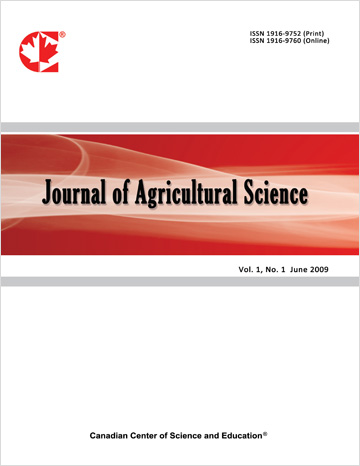Using Expert Knowledge to Understand Biosecurity Adoption Aimed at Reducing Tier 1 Disease Risks in the U.S. Livestock Industry
- Qianrong Wu
- Lee Schulz
- Glynn Tonsor
Abstract
Using primary data from a survey of swine, beef cattle, and dairy industry experts in the United States, this study provides insights into adoption of biosecurity measures aimed at reducing Tier 1 disease risks. Experts believe the swine industry would see the highest and the beef cattle industry would see the lowest biosecurity adoption in the first year of a large Tier 1 disease outbreak. Risk reduction has a positive marginal effect on biosecurity adoption, and a firm’s own risk reduction matters as well as their closest neighbor’s risk reduction. Costs have a negative marginal effect on biosecurity adoption. A key reason explaining partial adoption might be that experts believe industry-wide biosecurity investment would likely bring benefits primarily to downstream sectors in the supply chain and producers would bare most of the costs. More educational materials available to explain Tier 1 disease risks and the benefits of risk mitigating biosecurity measures is found to be the least important factor for adoption and implementation of new, additional biosecurity measures. A producer or neighbor having personally experienced a Tier 1 disease on their operation, a producer’s view on their own likelihood of experiencing a Tier 1 disease given their current situation, and a producer’s view on effectiveness in reducing Tier 1 disease risks are found to be the most important factors. Understanding how several factors might impact biosecurity adoption aimed at reducing Tier 1 disease risks is necessary for the development of practices and policies that could reduce the impact of such disease incursions.
- Full Text:
 PDF
PDF
- DOI:10.5539/jas.v10n1p12
Journal Metrics
- h-index: 67
- i10-index: 839
- WJCI (2023): 0.884
- WJCI Impact Factor (2023): 0.196
Index
- AGRICOLA
- AGRIS
- BASE (Bielefeld Academic Search Engine)
- Berkeley Library
- CAB Abstracts
- ChronosHub
- CiteSeerx
- CNKI Scholar
- Copyright Clearance Center
- CrossRef
- DESY Publication Database
- DTU Library
- e-Library
- EBSCOhost
- EconPapers
- Elektronische Zeitschriftenbibliothek (EZB)
- EuroPub Database
- Excellence in Research for Australia (ERA)
- Google Scholar
- Harvard Library
- IDEAS
- iDiscover
- Jisc Library Hub Discover
- JournalTOCs
- KindCongress
- LIVIVO (ZB MED)
- LOCKSS
- Max Planck Institutes
- Mendeley
- MIAR
- Mir@bel
- NLM Catalog PubMed
- Norwegian Centre for Research Data (NSD)
- Open J-Gate
- OUCI
- PKP Open Archives Harvester
- Polska Bibliografia Naukowa
- Qualis/CAPES
- RefSeek
- RePEc
- ROAD
- ScienceOpen
- Scilit
- SCiNiTO
- Semantic Scholar
- SHERPA/RoMEO
- Southwest-German Union Catalogue
- Standard Periodical Directory
- Stanford Libraries
- SUDOC
- Swisscovery
- Technische Informationsbibliothek (TIB)
- Trove
- UCR Library
- Ulrich's
- UniCat
- Universe Digital Library
- WorldCat
- WRLC Catalog
- Zeitschriften Daten Bank (ZDB)
Contact
- Anne BrownEditorial Assistant
- jas@ccsenet.org
